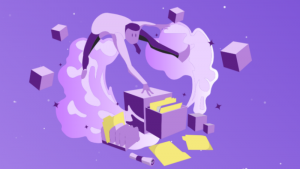
“The combined power and functionality of Aster and Osier makes a compelling case for enterprise grade supply chain use cases built on Scroll’s blockchain technology,” said Scroll CTO Samuel Opper. “We’re remastering traditional data architectures to promote a new scalable and secure standard.”

Paper trail processing is expensive
Supply chain management software orchestrates a gargantuan game of telephone and/or email wherein ETLs, ERPs, and other data management services attempt to communicate information at multiple endpoints. This processing of paper and digitized ‘trails’ is costly and time consuming. It is often dependent on manual data storage and handling.
Untrusted data, when used in business processes, can produce inaccurate results, for example with unauthorised activities which then lead to unsatisfied project requirements. Yet, neither machine nor end users possess an inherent ability to assess the accuracy of the data underlying any given process.
Blockchain, in contrast, offers the ability to provide incontrovertible data integrity through an accessible closed secure network. By using a blockchain for supply chains, the Scroll network significantly reduces:
- uncertainty, in the misuse of fraudulent data
- expense, that associated with recovery of leaked information
- resource and/or admin expenses, incurred for auditing and quality assurance.
“For blockchain technology to achieve widespread adoption, there needs to be a way for multiple blockchain ecosystems to be managed by one client,” said Scroll CEO Nate Pitruzzello. “Osier allows businesses to multi-chain, which is easier to manage than multiple source chains.”

Aster and Osier
Blockchain technology use in supply chain is limited without side chains. Written data on a chain needs to be available for use in multiple ecosystems. Osier has:
- the ability to have side chain owners
- compatibility with Aster
- future-proofing (for future Scroll Network related products).
Scroll designed Aster to:
- integrate with existing data management platforms
- optimize the efficiency of data transmitted, structured, and analyzed
- initiate a dynamic response (in order to decrease the time it takes for a product to go from the hands of the supplier ultimately to the consumer).
It created the Osier side chain to limit the processing power required for transactions specific to supply chain customers. Without Osier, migration to Scroll’s Aster Network for Supply Chain would be limited – as there would only be one supported blockchain ecosystem governing a specific consensus model.
The reason Scroll might make migration to blockchain easier is its simplicity of set up combined with an objective which envisages a business having its own Scroll Network domain by using the Scroll platform registry. On Scroll Network, a product key is received through the DAPP business portal, so each client can download its own instance of its Scroll Network domain.
This product key and other credentials are input to the Scroll command prompt which, in turn:
- sets granular permissions to dissolve insider threats
- stores and accesses data
- generates security profiles
- sustains budgeted up-time (via Scroll’s load balancer)
- provides archives and backups.
Enterprise Times: what does this mean
Scroll believes it has the first blockchain which provides data storage and management on-chain. The Scroll Network:
- remasters traditional data architectures via distributed ledger technologies
- places the storage of data in blocks on a blockchain.
- intends these provide an immutable and secure platform for businesses to store and transfer data seamlessly.
There is no doubting the issues which Scroll seeks to address. The On- and Off-chain issue is one which all enterprises participating in blockchain initiatives will have to consider. Whether this Scroll approach is the answer unclear. But at least it focuses on one of the key areas for blockchains in enterprises to succeed.


























